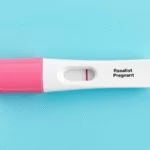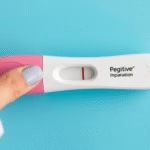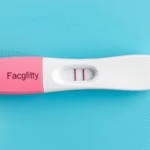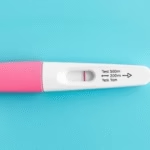Understanding Period Starting and Implantation Bleeding
When discussing menstrual health, two significant terms often arise: period starting and implantation bleeding. Understanding these terms is vital for anyone tracking their reproductive health. Menstrual bleeding typically indicates the shedding of the uterine lining when an egg is not fertilized. This natural process occurs as part of a woman’s menstrual cycle. On the other hand, implantation bleeding can occur in early pregnancy when a fertilized egg attaches itself to the uterine lining. This type of bleeding is usually light and can be mistaken for a light period, but it differs significantly in cause and duration.
recognizing these differences is essential for individuals trying to conceive or monitoring their cycles. Factors such as timing, flow, and accompanying symptoms can help distinguish between these two types of bleeding. Proper awareness can guide individuals in understanding their bodies, enhance reproductive health, and assist in making informed health decisions.
Characteristics of Menstrual Bleeding
Menstrual bleeding is a significant event in a woman’s reproductive health journey. Understanding its characteristics is fundamental for distinguishing it from other forms of bleeding.
The following outlines key characteristics of menstrual bleeding:
The distinction of these characteristics can help women identify if they are experiencing their period or another type of bleeding.
Understanding Implantation Bleeding
Implantation bleeding is a significant event that occurs shortly after conception. Recognizing its signs can be crucial for early pregnancy identification.
This type of bleeding typically occurs about six to twelve days after fertilization when a fertilized egg attaches to the uterus. Although it can be alarming, implantation bleeding is often lighter and shorter than a regular menstrual period.
Here are some characteristics of implantation bleeding:
Being aware of these signs can help women identify their pregnancy status early.
Differences Between the Two Types of Bleeding
Distinguishing between period starting and implantation bleeding is crucial for reproductive awareness. Both types of bleeding occur during the reproductive cycle, but they manifest differently.
The following outlines the major differences:
Understanding these key differences is essential as it can affect decisions relating to reproductive health and needs.
Impact of Hormones on Bleeding Patterns
Hormonal balance plays a significant role in menstrual health and can influence both menstrual and implantation bleeding. Hormones regulate the menstrual cycle and prepare the body for possible pregnancy.
During the menstrual cycle, estrogen and progesterone levels fluctuate. High estrogen levels lead to the thickening of the uterine lining. If pregnancy does not occur, progesterone levels drop, triggering the start of menstruation. In contrast, if conception occurs, progesterone remains high, supporting early pregnancy and affecting bleeding patterns.
Women experiencing regular hormonal fluctuations may notice variations in their menstrual cycles, including changes in bleeding pattern and flow. Stress, diet, exercise, and overall health can also impact hormonal balance. Understanding the role of hormones can aid in identifying normal versus concerning changes in bleeding.
Common Misconceptions About Implantation Bleeding
There are several myths about implantation bleeding that can lead to misunderstanding and confusion. Addressing these misconceptions helps in better understanding reproductive health.
Common misconceptions include:
Clearing out these myths can help women become more informed about their reproductive health.
When to Consult a Healthcare Provider
Consulting a healthcare provider during abnormal bleeding can help in identifying health issues. Understanding when to seek medical attention is important for reproductive health.
Women should consider consulting with healthcare professionals if they experience:
Proactive healthcare management can assist in identifying underlying conditions and maintaining reproductive health.
Final Thoughts
Understanding the differences between period starting and implantation bleeding is crucial for anyone monitoring their menstrual health or attempting to conceive. Recognizing the characteristics of menstrual cycles, knowing how hormones influence these patterns, and being aware of the signs of implantation bleeding can empower individuals with knowledge about their bodies.
While there are clear differences between menstrual bleeding and implantation bleeding, each woman’s experience may vary. Regular tracking of menstrual cycles can assist in identifying any irregularities or changes. If uncertainty arises, especially concerning changes in bleeding patterns, consulting a healthcare provider is advised to address any health concerns.
Awareness and early education on these topics can lead to healthier reproductive practices and improved overall well-being.
Frequently Asked Questions:
1. How can I tell the difference between my period and implantation bleeding?
Look for differences in timing, flow, and color. Implantation bleeding typically occurs before a missed period and is lighter, compared to menstrual bleeding.
2. Is implantation bleeding a sign of a healthy pregnancy?
While it indicates that implantation has occurred, it doesn’t guarantee pregnancy health. It’s important to monitor other signs and consult a healthcare provider.
3. Can stress affect my menstrual cycle?
Yes, stress can lead to changes in hormone levels, impacting cycle regularity and flow.
4. How soon can I take a pregnancy test after experiencing implantation bleeding?
Most tests recommend testing after a missed period for the most accurate results, as hormone levels may not yet be detectable.
5. Should I be concerned about heavy bleeding during my period?
If heavy bleeding persists for several days or is accompanied by severe pain, consult a healthcare provider for an assessment.
Further Reading
What Type of Psychotherapy Is Best for Anxiety?







